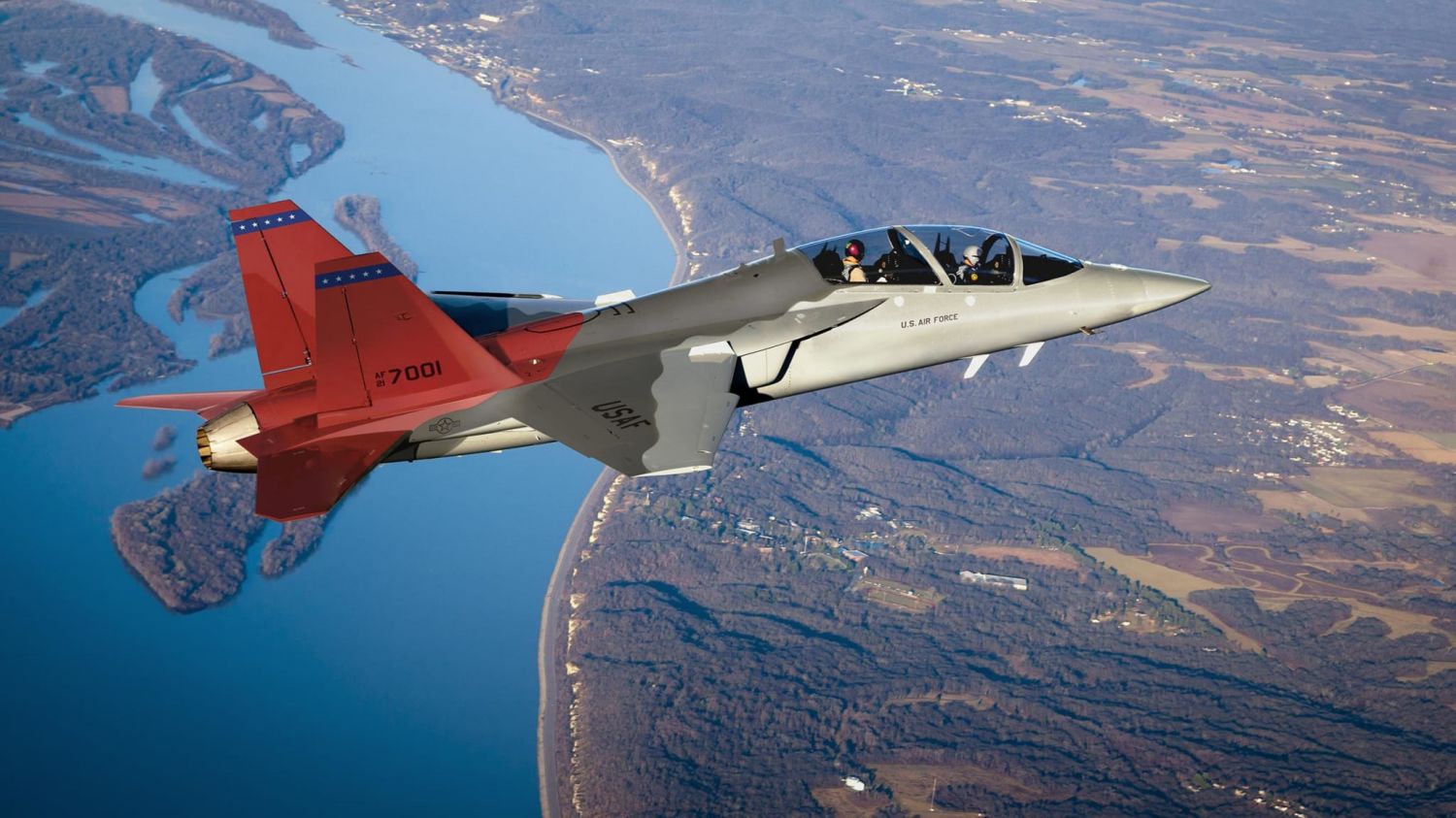Rollout of the first Boeing/Saab T-7A Red Hawk for the USAF
Boeing unveiled the first T-7A Red Hawk advanced trainer aircraft to be delivered to the U.S. Air Force. The aircraft is one of 351 that the USAF plans to order.
The aircraft is a product of digital engineering technology and was built and tested using advanced manufacturing techniques, which significantly reduced development time from design to first flight.
Boeing says the aircraft also features open-architecture software, providing growth capability and flexibility to meet future mission needs.
“We’re excited and honored to deliver this digitally advanced, next-generation trainer to the U.S. Air Force,” said Ted Colbert, president and CEO, Boeing Defense, Space & Security. “This aircraft is a tangible example of how Boeing, its suppliers and partners are leading the digital engineering revolution. T-7A will prepare pilots for future missions for decades to come.”
The T-7A Red Hawk incorporates a red-tailed livery in honor of the Tuskegee Airmen of World War II. These airmen made up the first African American aviation unit to serve in the U.S. military.
“The Tuskegee Airmen are one of the most celebrated units in our Air Force history, and the T-7A honors the bravery and skill of these trailblazers, said Gen. Charles Q. Brown, Jr., Chief of Staff of the Air Force. “Like the Airmen they were named and painted to pay homage to, the T-7A Red Hawks break down the barriers of flight. These digitally-engineered aircraft will make it possible for a diverse cross section of future fighter and bomber pilots to be trained, and provide an advanced training system and capabilities that will meet the demands of today’s and tomorrow’s national security environment.”
The aircraft will remain in St. Louis where it will undergo ground and flight tests before being delivered to the U.S. Air Force. The T-7A program resides at Boeing’s St. Louis facility with the aft section of the trainer being built by Saab in Linkoping, Sweden. Saab will soon start producing that section at their new production facility in West Lafayette, Indiana.



Para comentar, debés estar registradoPor favor, iniciá sesión